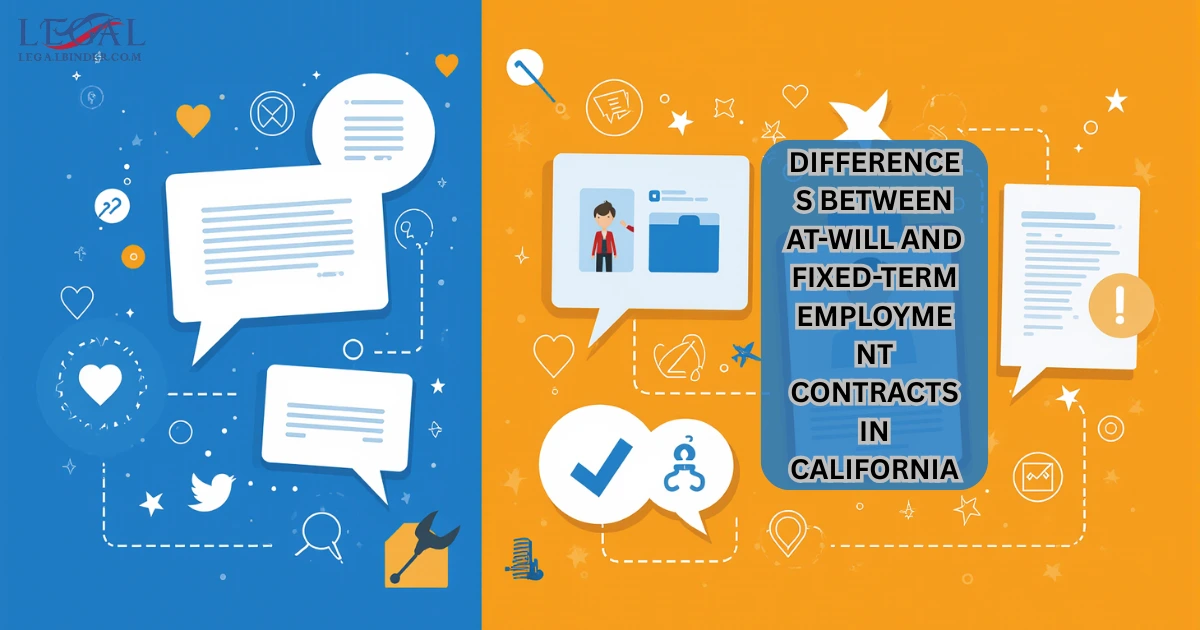Physical Address
304 North Cardinal St.
Dorchester Center, MA 02124
Physical Address
304 North Cardinal St.
Dorchester Center, MA 02124

The at-will California contracts model and fixed-term employment agreements are two common frameworks California employers use to set expectations and legal obligations. Understanding the differences is essential for compliance with California law and for protecting both employer and employee rights. This guide compares the two contract types, explains California-specific requirements, lists necessary forms, and provides a step-by-step process to create or convert agreements.
This article explains what at-will California contracts mean, how fixed-term contracts work, and the key legal distinctions under California law. You will learn when each contract type is appropriate, what clauses to include, what state agencies to consult, which forms are required, and how to avoid common mistakes. The goal is a practical roadmap for employers and employees operating in California.
In California, an at-will employment relationship means either party can terminate employment at any time, for any lawful reason, with or without notice. At-will California contracts typically include a clear at-will statement and do not promise continued employment for a specific duration.
Fixed-term contracts, by contrast, specify a definite start and end date or a condition that ends the contract (e.g., completion of a project). Fixed-term agreements create more predictable obligations and may limit a California employer’s ability to terminate early without liability.
California maintains heightened employee protections. Employers must align contracts with the California Department of Industrial Relations (DIR) regulations, and follow guidance from the California Courts when disputes arise.
Include language confirming the employee’s legal authorization to work in the U.S. and note any California residency or local tax implications for employees working inside the state.
There is no state filing fee to create an employment contract in California. Processing time is internal: drafting and review typically range from a few days to several weeks depending on counsel review and negotiation.
California requires prompt final wage payment timelines; include provisions that reflect state rules so you can meet required deadlines when employment ends.
Q1: Can I switch an at-will employee to a fixed-term contract?
A1: Yes, but the change should be documented in writing and signed by both parties. Clarify term length, renewals, and termination consequences to avoid disputes under California law.
Q2: Does a fixed-term contract protect against immediate termination?
A2: Not completely. Employers may include early termination clauses, but wrongful termination before the term ends may give rise to breach claims under California law unless the contract permits termination for cause or provides severance.
Q3: Are verbal at-will agreements valid in California?
A3: Verbal at-will relationships are possible, but written contracts reduce misunderstandings and provide stronger legal evidence in California disputes.
Q4: Will repeated fixed-term renewals create permanent employment?
A4: Repeated renewals can create the appearance of permanent employment. To avoid ambiguity, include renewal limits or convert to an at-will arrangement after a set number of renewals.
Q5: Can fixed-term employees receive the same benefits as at-will employees?
A5: Yes — benefits depend on the employer’s policies and the contract terms. California law may require certain benefits regardless of contract type.
Choosing between at-will California contracts and fixed-term agreements depends on your business needs and the role’s nature. Both require careful drafting to comply with California statutes on wages, leave, and termination. Review contracts regularly to reflect changes in California law and consult an experienced California employment attorney for complex situations.
For official guidance and forms, visit the California Department of Industrial Relations or the California Courts links above. For templates and practical resources, return to our homepage or consult a qualified California employment lawyer.